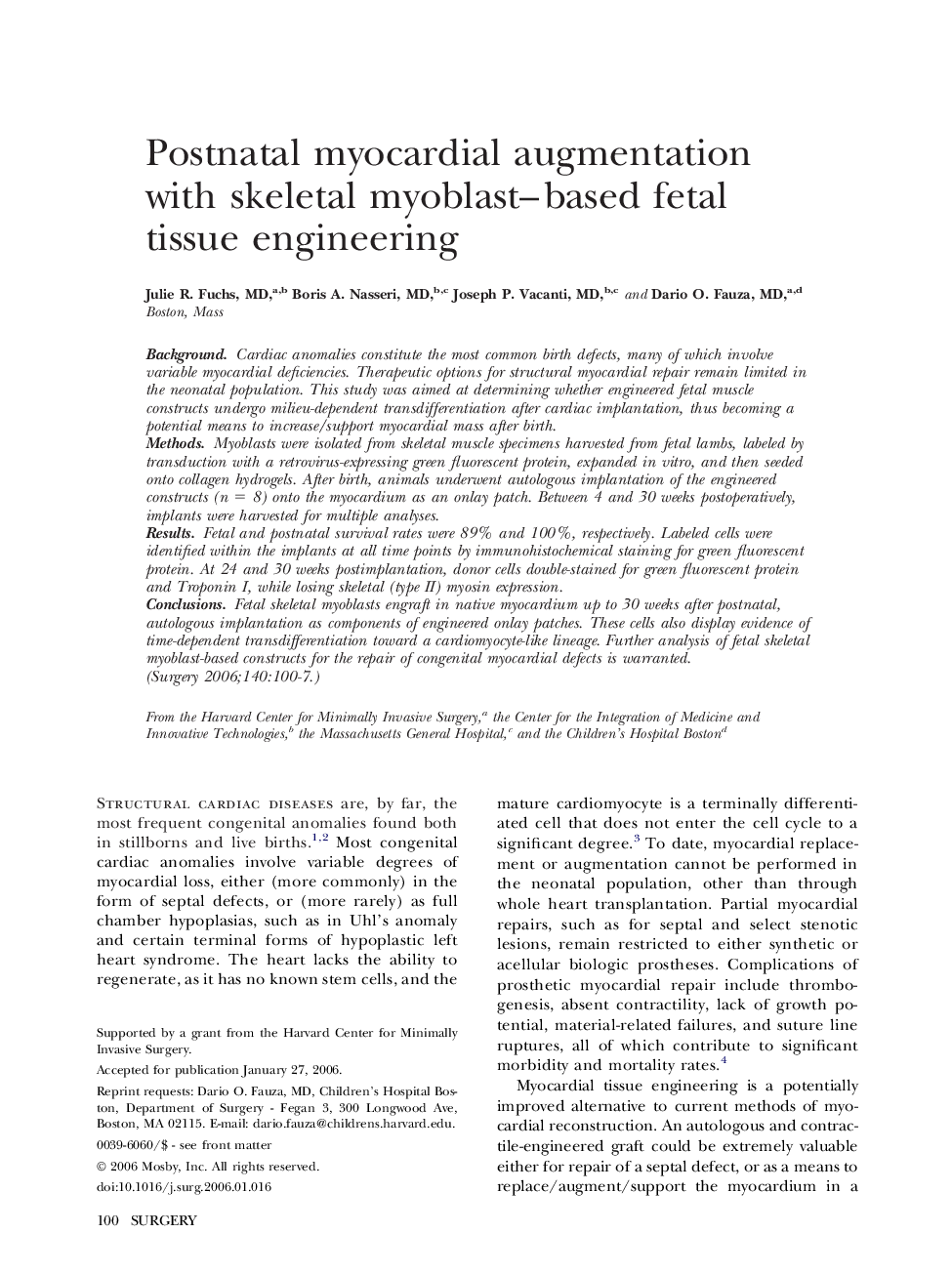| Article ID | Journal | Published Year | Pages | File Type |
|---|---|---|---|---|
| 4309872 | Surgery | 2006 | 8 Pages |
BackgroundCardiac anomalies constitute the most common birth defects, many of which involve variable myocardial deficiencies. Therapeutic options for structural myocardial repair remain limited in the neonatal population. This study was aimed at determining whether engineered fetal muscle constructs undergo milieu-dependent transdifferentiation after cardiac implantation, thus becoming a potential means to increase/support myocardial mass after birth.MethodsMyoblasts were isolated from skeletal muscle specimens harvested from fetal lambs, labeled by transduction with a retrovirus-expressing green fluorescent protein, expanded in vitro, and then seeded onto collagen hydrogels. After birth, animals underwent autologous implantation of the engineered constructs (n = 8) onto the myocardium as an onlay patch. Between 4 and 30 weeks postoperatively, implants were harvested for multiple analyses.ResultsFetal and postnatal survival rates were 89% and 100%, respectively. Labeled cells were identified within the implants at all time points by immunohistochemical staining for green fluorescent protein. At 24 and 30 weeks postimplantation, donor cells double-stained for green fluorescent protein and Troponin I, while losing skeletal (type II) myosin expression.ConclusionsFetal skeletal myoblasts engraft in native myocardium up to 30 weeks after postnatal, autologous implantation as components of engineered onlay patches. These cells also display evidence of time-dependent transdifferentiation toward a cardiomyocyte-like lineage. Further analysis of fetal skeletal myoblast-based constructs for the repair of congenital myocardial defects is warranted.
